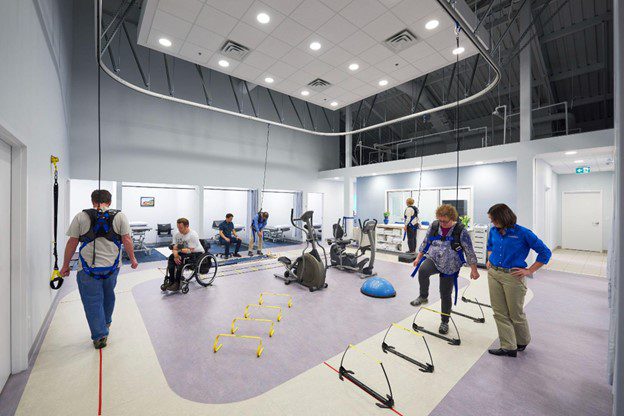Starting a Balance Program

You already know that some of the basic elements your workout program should include are weight training, cardio activities, and activities to improve your flexibility. One element of fitness that many individuals need to improve is their balance. Many organizations recommend balance training, especially for patients who may have a balance disorder or who are seniors. There has been a much bigger emphasis on balance training in recent years, so now is the time to maximize your facilities potential by starting a balance training program!
Where Does Balance Come From?
These three systems in your body work together to keep you upright and balanced:
- Your eyes and visual system
- Your vestibular system in your inner ear
- Your proprioceptive system in your muscles and joints
Anything that disrupts how these systems work together, or how they connect to each other, can cause problems with your balance.
Why Your Patients May Need Balance Training
A patient may need balance training if:
- They have trouble moving safely on their own
- They have been injured in a fall or have a history of falling
- They have had a stroke and may now suffer from balance problems
- They are an athlete recovering from injury
- They have had surgery
- They have vertigo, which is linked to inner-ear disorders
Effective Balance Equipment for your Facility
You may use special exercise equipment to help challenge your patient’s balance. There are many pieces of equipment to help your patients gain balance during physical therapy. These may include yoga blocks, balance boards, and more.

Exercise Balls
Exercise balls allow for injury rehabilitation of specific areas on the body. They can be used to demonstrate exercises that the patient can also do at home. Exercise balls are multi-functional, offering a range of difficulty levels depending on the exercise or stretch and the patient’s condition.

Resistance Bands
Resistance bands are portable, versatile, and inexpensive. Physical therapists use resistance bands to treat injuries in combination with other methods because of their adaptability in targeting a variety of major muscle groups. These thick rubber band like tools allow your patients to progress their exercises by adding more resistance, challenging their muscles without additional weights.

Yoga Blocks
Yoga blocks are a foam block, commonly used in yoga and Pilates, used to lift a certain body part off the ground while the rest of the body stays in a stable position. These blocks can be used in various ways to help the patient gain balance in different positions.

Balance Boards
A balance board has a flat, uniform surface on top with a soft or rounded unstable bottom. Balance boards are commonly made of plastic or wood. Users stand on the flat surface and work to create or maintain balance. Balance boards provide users with increased balance and coordination. They also improve motor skills and reaction time. A balance board is also great to improve your patients core strength.
Solo-Step Fall Prevention System to Prevent Falls
No matter what exercise your patients are performing, it is important to protect them from costly falls and injuries. Our overhead track and harness system is the perfect support system for your patients. The overhead track and harness system is rated to hold patients up to 450 lbs., protecting them from falls during physical therapy.
Our system also provides therapists with protection from back strain, bending over to help patients, and more. Pairing the Solo-Step safety overhead system with these different pieces of equipment will separate your facility from the rest!
If you are thinking about starting a balance program, check our our post on How to Start a Balance Program for Physical Therapy.
